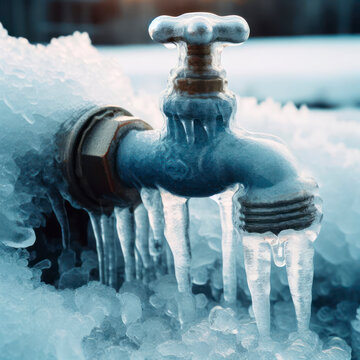Almost everyone maintains their personal theory involving 6 Ways to Prevent Frozen Pipes.

Cold weather can ruin your plumbing, specifically by freezing pipes. Here's exactly how to stop it from occurring and what to do if it does.
Introduction
As temperature levels decrease, the threat of frozen pipelines increases, possibly resulting in costly repairs and water damages. Understanding just how to stop frozen pipelines is crucial for house owners in cold environments.
Avoidance Tips
Insulating prone pipelines
Wrap pipelines in insulation sleeves or use warmth tape to shield them from freezing temperatures. Concentrate on pipelines in unheated or external areas of the home.
Home heating methods
Keep indoor rooms properly warmed, specifically areas with plumbing. Open cabinet doors to permit cozy air to distribute around pipelines under sinks.
Just how to identify icy pipelines
Seek reduced water flow from faucets, uncommon smells or noises from pipelines, and visible frost on subjected pipelines.
Long-Term Solutions
Structural changes
Consider rerouting pipes far from outside walls or unheated areas. Add additional insulation to attics, basements, and crawl spaces.
Upgrading insulation
Invest in high-grade insulation for pipelines, attic rooms, and walls. Proper insulation aids maintain consistent temperatures and lowers the threat of icy pipelines.
Safeguarding Outdoor Pipes
Yard hose pipes and outside taps
Separate and drain pipes yard pipes before wintertime. Set up frost-proof faucets or cover outdoor taps with insulated caps.
Comprehending Icy Pipelines
What creates pipelines to ice up?
Pipes freeze when subjected to temperature levels below 32 ° F (0 ° C) for extended periods. As water inside the pipelines ices up, it expands, taxing the pipe wall surfaces and possibly triggering them to rupture.
Threats and problems
Icy pipelines can bring about supply of water disruptions, residential or commercial property damages, and costly repair services. Ruptured pipelines can flooding homes and trigger substantial structural damages.
Indications of Frozen Water Lines
Recognizing icy pipelines early can avoid them from rupturing.
What to Do If Your Pipes Freeze
Immediate actions to take
If you suspect icy pipelines, keep faucets open to soothe stress as the ice melts. Make use of a hairdryer or towels taken in hot water to thaw pipelines slowly.
Conclusion
Protecting against frozen pipelines needs proactive actions and quick responses. By comprehending the reasons, indicators, and preventive measures, home owners can safeguard their pipes during cold weather.
5 Ways to Prevent Frozen Pipes
Drain Outdoor Faucets and Disconnect Hoses
First, close the shut-off valve that controls the flow of water in the pipe to your outdoor faucet. Then, head outside to disconnect and drain your hose and open the outdoor faucet to allow the water to completely drain out of the line. Turn off the faucet when done. Finally, head back to the shut-off valve and drain the remaining water inside the pipe into a bucket or container. Additionally, if you have a home irrigation system, you should consider hiring an expert to clear the system of water each year.
Insulate Pipes
One of the best and most cost-effective methods for preventing frozen water pipes is to wrap your pipes with insulation. This is especially important for areas in your home that aren’t exposed to heat, such as an attic. We suggest using foam sleeves, which can typically be found at your local hardware store.
Keep Heat Running at 65
Your pipes are located inside your walls, and the temperature there is much colder than the rest of the house. To prevent your pipes from freezing, The Insurance Information Institute suggests that you keep your home heated to at least 65 degrees, even when traveling. You may want to invest in smart devices that can keep an eye on the temperature in your home while you’re away.
Leave Water Dripping
Moving water — even a small trickle — can prevent ice from forming inside your pipes. When freezing temps are imminent, start a drip of water from all faucets that serve exposed pipes. Leaving a few faucets running will also help relieve pressure inside the pipes and help prevent a rupture if the water inside freezes.
Open Cupboard Doors
Warm your kitchen and bathroom pipes by opening cupboards and vanities. You should also leave your interior doors ajar to help warm air circulate evenly throughout your home.

As a devoted reader on Prevent Frozen Pipes , I figured sharing that excerpt was worthwhile. Sharing is caring. Helping people is fun. We love reading our article about How to prepare your home plumbing for winter weather.
Show Details